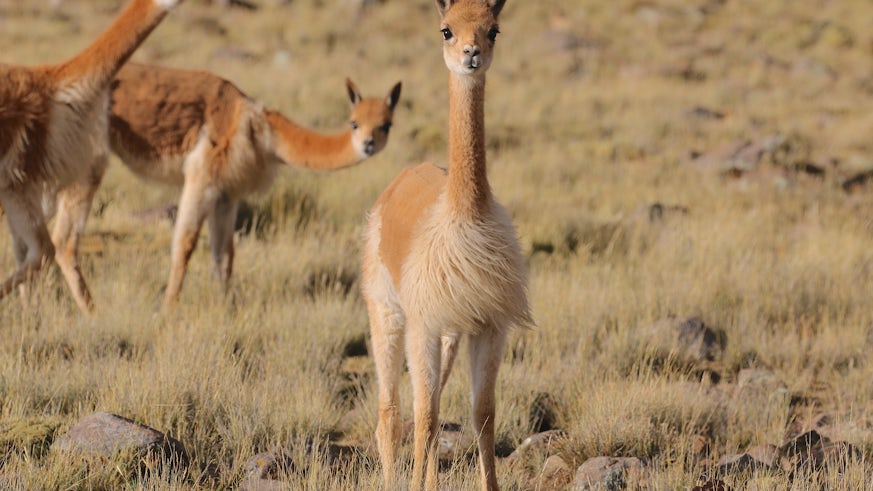The genetic history of the vicuña and the guanaco revealed
18 September 2018

New research by Cardiff University has recently characterised the evolutionary history of the wild relative to the alpaca, which will help to develop strategies to protect an iconic Andes species.
The vicuña and the guanaco are ancestors of the alpaca and llama, which can be spotted across the landscapes of Peruvian and Northern Chile. A study by the School of Biosciences at Cardiff University, has uncovered genetic clues behind their evolution and population decline.
The research investigated the DNA differences between the two animals, focusing on where the vicuña and the guanaco are based in Peru and Chile.
Dr Pablo Orozco Ter Wengel, Cardiff University, said: “We were looking at the genetic variations in these two animals, analysing how different they are, and exploring how this relates to where we find them.
“Our research showed that these two animals are divided into two distinct groups, indicating that there is little genetic cross over between the two populations.
“We also uncovered information about the species decline throughout history.
“The Spanish conquest of South America saw the demise of these animals, with fewer than 5,000 Peruvian vicuña in the wild 50 years ago.
“Our study showed that the species also massively decreased around 2000 to 3000 years ago, coinciding with the major human population expansion in South America.
“This information is important to the survival of these animals, as we can use the data gathered from genetic analysis to inform the development of species management strategies, helping to ensure their future.”